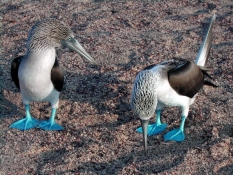Queens
College/CUNY
Education Unit
Spring 2014
Lesson planning activity
Pick a topic in your content area suitable to cover in a single lesson. As a group discuss each task in the construction of a lesson plan. After every group has gone through the tasks we will have a group discussion. If you have any questions or don't understand a certain task, you can bring it up in the whole class discussion.
The Lesson Plan
(To be submitted with the
pre-lesson
thoughts)
Key:
Blue words you will have in your prepared
plan; pink words are examples of how you would write those
sections for the
Pressure in Gasses lesson; Green letters guide you as to
what is to go in that
section.
Lesson Plan Observation #
Date: Grade Level: School:
Topic: Pressure in Gases
Aim: To teach students the concept of atmospheric pressure and units of pressure.
Objectives: By the end of the lesson students will be able to
(a) Describe how a barometer works
(b) Work with the units mm of mercury, atmospheres and PSI and be able to convert from one to the other
NYS Standards: List them with the appropriate # and statement
Do Now: (2-4 minutes) This should either focus on a review of past work, or a reminder of skills needed for this lesson. It is to be a quiet time where students work alone.
Motivation: (2 minutes max) This should be thought of as “How am I going to introduce the lesson to capture the interest of the students at the outset?” It may be a series of questions, a cartoon, a short film, a link to an article on the web, a newspaper clipping, a quick demo or virtually anything else. For the lesson on pressure in gases, a couple of ideas:
(a) Show a picture of a barometer and ask who can tell you what it is and what it does.
(b) “On Sunday Nov 4th, weather forecasters were saying that the storm approaching New York was going to be very serious because the pressure of the weather system was 740.” What bearing does the number 740 have on the prediction of a severe storm?
Development of the lesson. (Mini-Lesson) (15 minutes) This should be written as a numbered sequence of exactly what you are going to do. It should include pivotal questions you plan to ask, examples you are going to use, specific vocabulary you are going to introduce, equivalence relations you will cover, demonstrations you are planning and how you will incorporate good scientific practice into the lesson. The development section should be detailed enough so that one of your peers could physically pick up the lesson plan and deliver the lesson as you have envisaged it.
Student Activity. After the mini lesson there will be some form of activity to reinforce what has been taught. You must detail how you are going to assess the students throughout the activity for purposes of further guiding the instruction. If you plan on a hands-on activity you should list the materials and technology you are going to use, and give details on how you are going to execute the activity; for example, how you are going to divide the students into groups.
